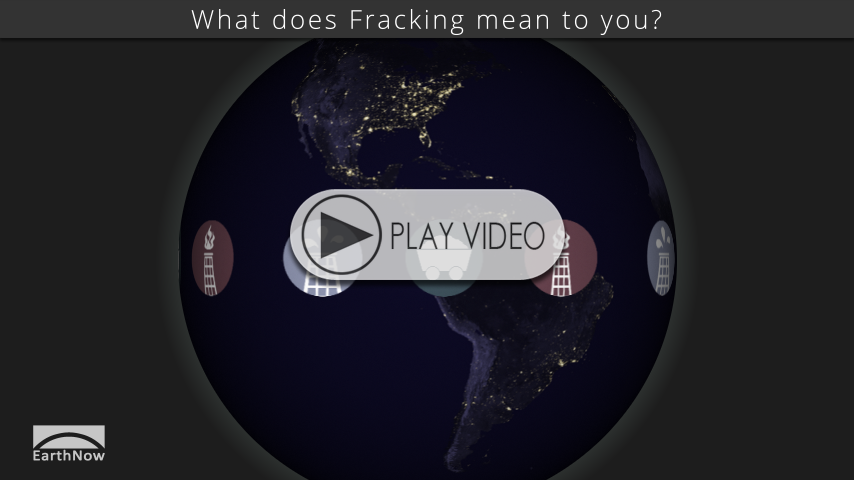 SOS Playlists
SOS Playlists
 SOS AutoRun/Audio Playlist
SOS AutoRun/Audio Playlist
Overview
A new technology called fracking releases natural gas from shale formations and could supply domestic energy demand for the next hundred years. Fracking is good news for some and bad news for others. This post and video will help explain how.
About the Dataset
Audio Dataset Name: 20131024 EarthNow: AUDIO Fracking
- The first part of the visualization shows Earth at Night data for 1992, 2002, and 2012, conveying the growing global demand for. We then discuss the various types of renewable and nonrenewable resources, with icons showing up on the globe to represent them. This section also includes a pie chart from the U.S. Energy Information Administration, showing U.S. energy consumption by source, with renewable energy making up less than 10%.
- Following the pie chart, we discuss two of the major concerns with the increased use of fossil fuels. First the Earth at Night data changes to one of the existing IPCC global temperature models, showing a warming Earth, along with an animated CO2 curve graph. Then, the nonrenewable resources icons disappear, representing that once they are gone, they are gone for good.
- Later, we show a shale gas distribution map, followed by a cross-section of a shale bed. We then discuss the bad news and good news of fracking, including earthquake symbols, when the voiceover discusses the possibility of earthquakes.
- At the end, we show a graph that conveys the growth of shale gas production.
- Lastly, we show the existing Blue Marble image to tie everything together.
The Impact
There are two big concerns with increased use of fossil fuels:
1) Burning fossil fuels releases carbon dioxide into the air, a greenhouse gas causing Earth to gradually become warmer.
2) Fossil fuels are a nonrenewable resource. Once we use them up, they will be gone.
As the world population grows dependent on electricity and motorized transportation, people seek new energy sources and ways to reach sources that used to be too difficult to tap. New technology has made it possible to recover gas from shale.
The bad news is that each well uses about 3 million gallons of water laced with chemical additives to fracture the shale. Improper handling of wastewater could contaminate groundwater or deplete fresh water aquifers in drought-prone areas.
Another issue is that fracking waste water disposal can sometimes trigger earthquakes. According to the US Geological Survey, out of 40,000 waste water wells only a few have caused earthquakes of any concern. A 4.0 earthquake in Youngstown, Ohio in 2011 and tremors in other places that never registered them before have people on edge.
The good news is natural gas burns cleaner than coal, releasing less pollution and carbon dioxide to the atmosphere. It also reduces US dependence on foreign oil.
Many open questions remain about the risks and benefits of fracking to release natural gas from shale, and they affect all of us through the energy we use, the water we drink and the air we breathe.
Where do I find the datasets?
-
First, check your SOS system to make sure it’s not already in the EarthNow category.
-
If not, you can download the datasets and playlist files from this FTP Site.
-
Then download and use playlist files at the top of the page (or create your own) and make sure they are in /home/sosrc or /home/sosrc.
-
More detailed information here
-
Magic Planet Version






